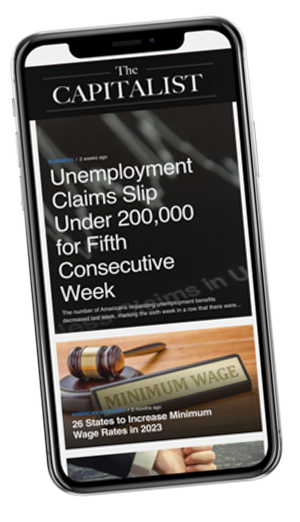News
Fed Meeting Reaction: Dow Jones Hits 10-Day Losing Streak As Stocks Continue to Plummet

Source: YouTube
As President-elect Donald Trump prepares to implement sweeping mass deportation plans this January, the spotlight has turned to the millions of illegal immigrants residing in the United States. These individuals, often part of “mixed-status households,” play vital roles in the economy but face uncertain futures as the government ramps up immigration enforcement. But literally speaking, who are these illegal immigrants, and how can you distinguish them from legal ones? A recent Reuters article shared its profile on who these illegal immigrants are and what they do.
Who Are the Illegal Immigrants?
According to the U.S. Department of Homeland Security, there were an estimated 11 million illegal immigrants in the U.S. at the start of 2022, with analysts projecting this number could have risen to 13-14 million by early 2024. Nearly half of this population originates from Mexico, accounting for approximately 4.8 million people. Other significant groups come from Guatemala, El Salvador, and Honduras, with an additional 2 million immigrants arriving from Cuba, Haiti, Nicaragua, and Venezuela under Biden-era humanitarian programs.
These individuals often live in sanctuary states such as California, New York, and Illinois, where local policies limit cooperation with federal immigration authorities. Approximately 44% of the illegal immigrant population resides in these states, which offer some protection against deportation efforts.
Why Are They Considered Illegal?
The classification of these immigrants as “illegal” stems from their lack of legal status, which may result from overstaying visas, entering the country unlawfully, or failing to meet specific legal criteria for residency. Some also hold temporary protections under programs like Temporary Protected Status (TPS) or Deferred Action for Childhood Arrivals (DACA), which grant limited relief but are not permanent solutions. These programs, often contested in courts, highlight the precariousness of their status.
What Jobs Do They Hold?
Illegal immigrants contribute significantly to the U.S. economy, with the majority falling within the prime working-age group of 18-54 years. They are particularly prominent in agriculture, where estimates suggest they account for up to 1 million workers nationwide. California alone employs nearly half of these individuals in farming roles, ensuring the steady production of fruits, vegetables, and other crops vital to the food supply chain.
Beyond agriculture, illegal immigrants also work in construction, hospitality, and domestic services, sectors heavily reliant on their labor. Despite their contributions, these workers often face low wages, poor working conditions, and limited legal protections, making them vulnerable to exploitation.
The Social Impact of Mass Deportation
Trump’s proposed mass deportation plan could have far-reaching consequences. Among the estimated 14.5 million illegal immigrants and those with temporary protections, more than 10 million live in mixed-status households. This includes 5.1 million U.S. citizen children who may face family separations or forced relocations.
The economic ramifications are equally significant. Removing millions of workers from key industries could disrupt supply chains, inflate costs, and create labor shortages. Farmers, in particular, have urged the incoming administration to exempt agricultural workers, warning that their removal could destabilize the food supply.
A Long History in the U.S.
Illegal immigrants are not new arrivals; over 54% have lived in the U.S. for more than a decade, integrating into local communities and contributing to society. However, their legal status remains a contentious issue, with debates over pathways to citizenship, temporary protections, and enforcement measures shaping immigration policies.
Challenges Ahead for Enforcement
Enforcing mass deportation will not be without challenges. Sanctuary states’ refusal to cooperate with federal agencies, legal battles over programs like TPS and DACA, and logistical hurdles in identifying and removing individuals make this a complex initiative. Additionally, the human cost—splitting families and disrupting lives—adds a moral dimension to the political debate.
As January approaches, the fate of these individuals hangs in the balance, with implications for both the immigrants themselves and the broader U.S. society.
Should Trump proceed with his promise of mass deportation for illegal immigrants? Tell us what you think!




1 Comment
We need -print less money. Money must have a commodity value, according to the Austrian-school (Misesian) economists. Printing money often causes inflation.